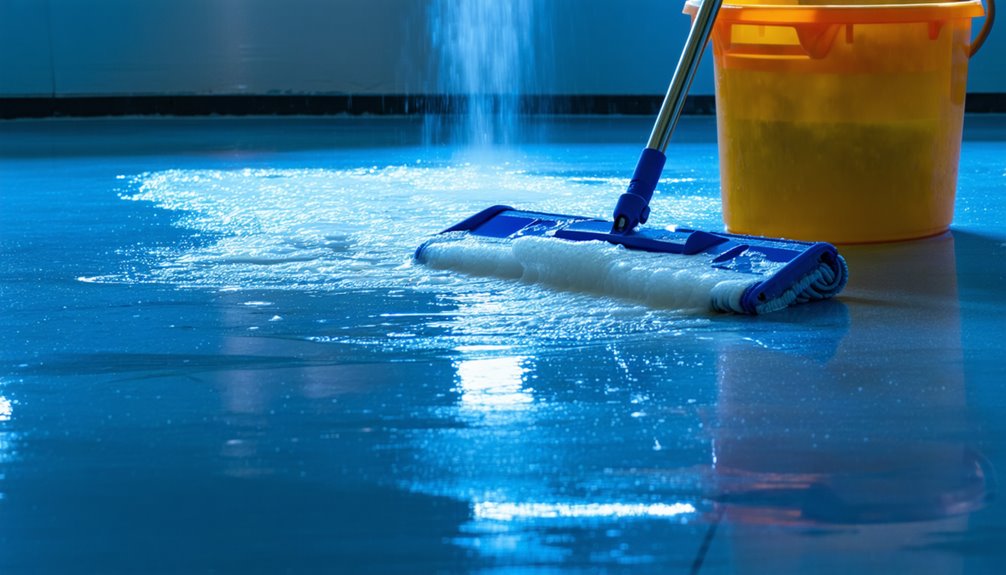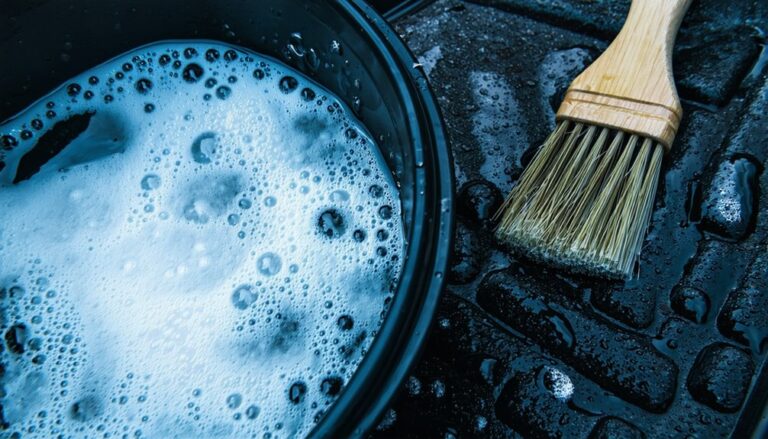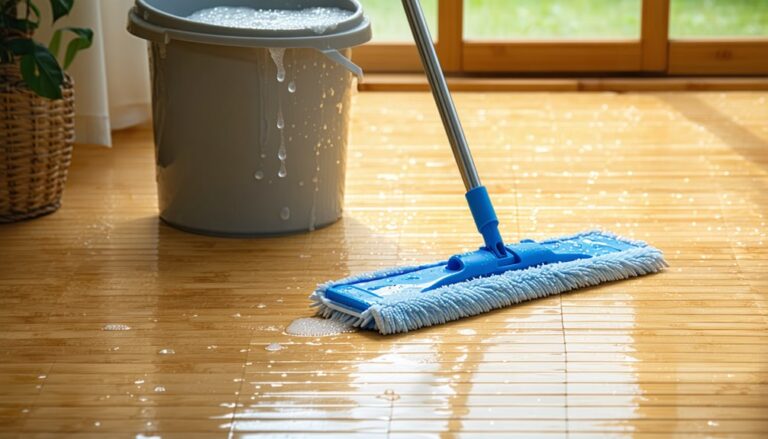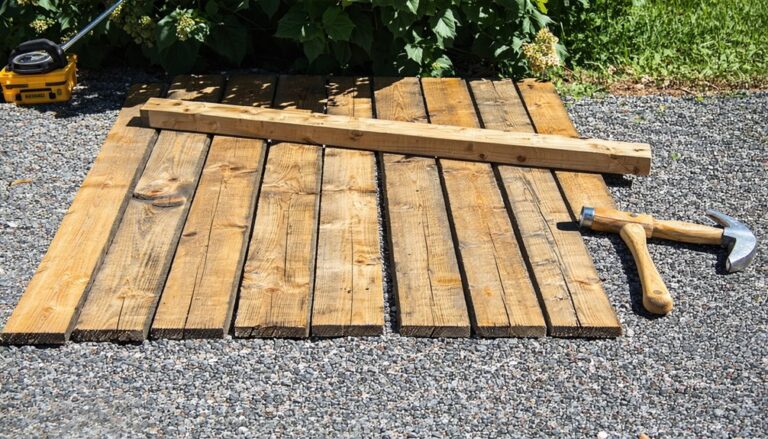To clean your epoxy floor, gather supplies like a soft-bristle broom, a microfiber mop, and pH-neutral cleaning solutions. First, sweep or vacuum the floor to remove dust and debris. Prepare a cleaning solution, such as one cup of mild detergent per gallon of warm water. Mop the Boden using a figure-eight motion, starting in a corner and working towards the exit. For tough stains, apply appropriate cleaners like degreasers or vinegar. Regularly maintain the surface by sweeping weekly and spot cleaning as needed. With these steps, your epoxy floor will stay clean and vibrant, and there's more to explore on upkeep techniques.
Besorgen Sie sich die notwendigen Vorräte
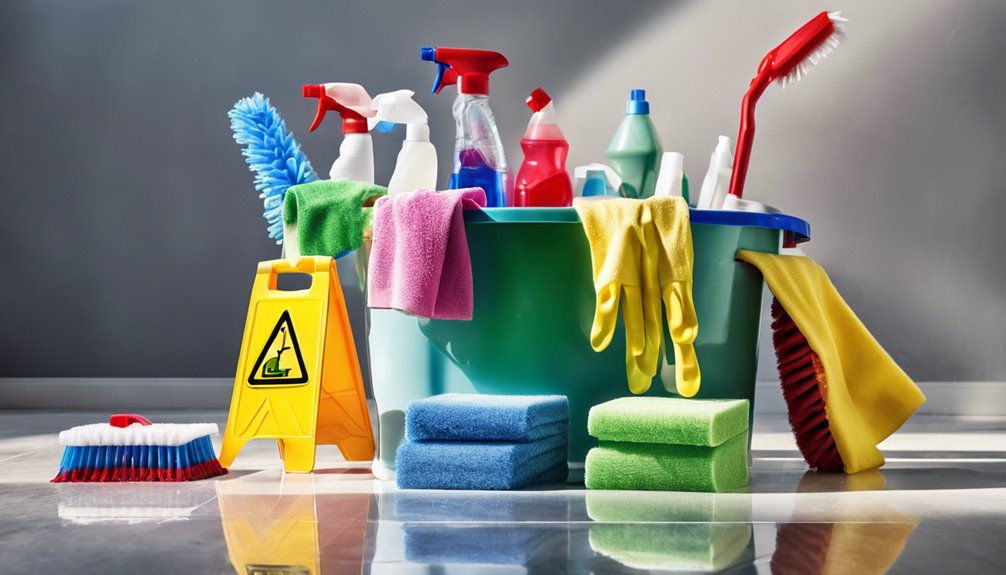
To effectively clean your epoxy floor, you'll need to gather a few essential supplies. Start with high-quality cleaning products specifically formulated for epoxy surfaces. This guarantees you won't damage the finish while achieving maximum cleanliness. A soft-bristle broom or dust mop is vital for picking up dust without scratching the surface.
Don't forget to include a bucket and a microfiber mop for application. When choosing cleaning solutions, check for pH neutrality to avoid chemical reactions.
Additionally, always wear gloves and goggles as safety precautions to protect yourself from any harsh chemicals. With the right supplies in hand, you'll be well-prepared to maintain your floor's integrity and appearance, allowing you the freedom to enjoy a spotless, safe environment.
Sweep and Remove Debris
To effectively clean your epoxy floor, start by gathering the necessary cleaning tools, including a broom and dustpan. Once equipped, sweep the entire surface thoroughly to guarantee all dust and debris are removed. After sweeping, properly dispose of the collected debris to maintain a clean and hygienic environment.
Gather Cleaning Tools
Before diving into the cleaning process, it is vital to gather the right tools for effectively sweeping and removing debris from your epoxy floor. Start with a sturdy broom or a dust mop, as these are essential for capturing dust and larger particles without scratching the surface. A vacuum cleaner with a soft brush attachment is also valuable, especially for corners and crevices. Consider using a microfiber cloth for fine dust removal. Confirm your tool selection aligns with appropriate cleaning techniques; this will enhance efficiency and maintain the floor's integrity. Having these tools on hand will not only streamline your cleaning process but also empower you to maintain the pristine condition of your epoxy floor effortlessly.
Sweep Thoroughly
With your cleaning tools ready, it's time to sweep thoroughly and remove any debris from your epoxy floor. Effective sweeping techniques are essential for maintaining the pristine condition of your surface. Begin by identifying the various debris types you'll encounter, including dust, dirt, leaves, and small stones. Utilize a high-quality broom or vacuum designed for hard surfaces to achieve excellent results.
- Sweep in one direction to gather debris.
- Pay special attention to corners and edges.
- Use a dustpan or vacuum to collect debris efficiently.
- Regularly check for missed spots.
- Consider sweeping at least once a week for maintenance.
Dispose of Debris
After sweeping, it's crucial to dispose of the collected debris properly to maintain the integrity of your epoxy floor. Various debris types, such as dust, dirt, and small particles, can accumulate, potentially damaging the surface if left unattended. For effective disposal methods, consider using a vacuum with a HEPA filter for fine dust or a dustpan for larger particles. Make sure you're disposing of waste according to local regulations, especially if the debris includes hazardous materials. Recycle when possible, and never pour liquids directly onto the floor. By following these proper disposal techniques, you'll protect your epoxy floor from scratches and stains, guaranteeing it stays looking pristine and lasts for years to come.
Prepare Cleaning Solution
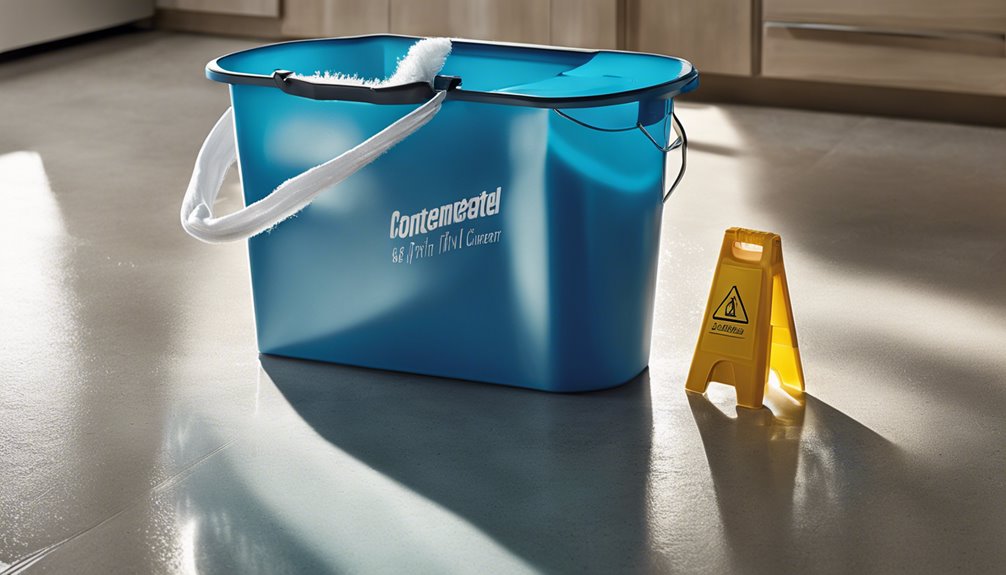
To effectively clean an epoxy floor, you'll need to prepare a suitable cleaning solution tailored to the specific type of dirt and stains present. Start by selecting appropriate cleaning agents based on the contaminants. For peak results, pay attention to solution ratios; a common mixture is one cup of mild detergent per gallon of warm water.
Consider these helpful components:
- White vinegar for natural deodorizing
- Baking soda for stubborn stains
- Isopropyl alcohol for grease removal
- pH-neutral cleaners to avoid damage
- Essential oils for a pleasant scent
Mix these agents thoroughly and adjust ratios as necessary to tackle specific issues. This preparation guarantees your cleaning process is both effective and safe for your epoxy flooring.
Mop the Epoxy Floor
Begin by mopping the epoxy floor using a suitable mop and your prepared cleaning solution. For effective mopping techniques, start in a corner and work your way toward the exit to avoid stepping on freshly cleaned areas. Use a figure-eight motion to cover more surface area while ensuring thorough cleaning. If the floor's heavily soiled, consider using a scrubbing mop for deeper penetration. Your cleaning frequency should be determined by foot traffic and exposure to dirt; generally, mopping every two weeks is advisable for most environments. After mopping, allow the floor to air dry completely before use, ensuring you maintain the integrity and shine of your epoxy surface. Consistent care will extend the lifespan of your floor.
Address Stains and Spots
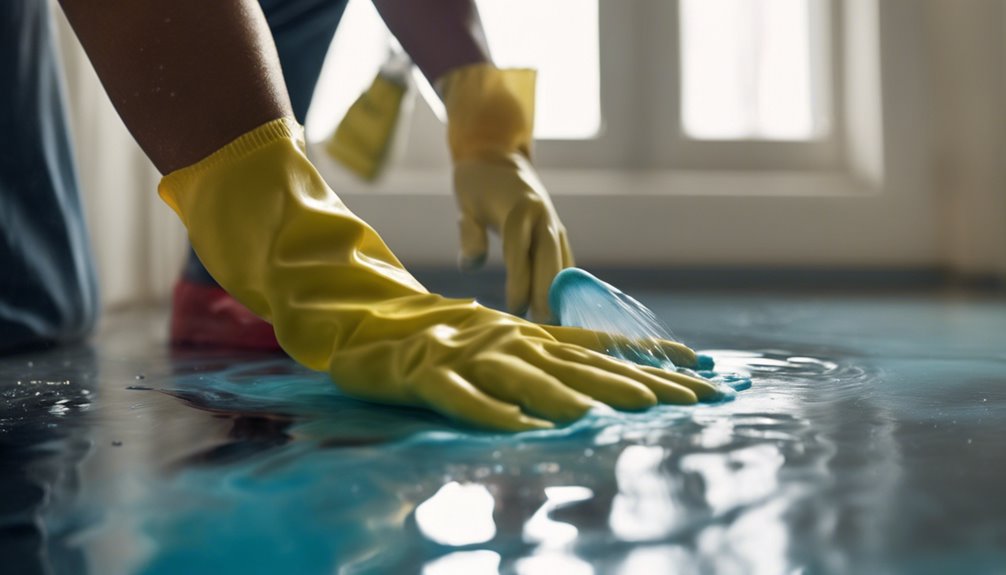
Although epoxy floors are known for their durability, stains and spots can still occur due to spills, dirt, or heavy foot traffic. To effectively handle these issues, you'll want to focus on stain removal using appropriate cleaning products. Start by identifying the type of stain, as different products work better for specific substances.
- Use a pH-neutral cleaner for general stains.
- For grease, consider a degreaser.
- Apply vinegar or baking soda for stubborn spots.
- Test any cleaning product on a small area first.
- Always rinse thoroughly to avoid residue.
Dry and Maintain Surface
To maintain your epoxy floor, establishing a regular sweeping schedule is essential to prevent dirt accumulation. Additionally, employing effective spot cleaning techniques can help address any specific areas of concern before they become more challenging to manage. By prioritizing these practices, you'll guarantee your floor remains in prime condition.
Regelmäßiger Kehrplan
Regularly sweeping your epoxy floor is essential for maintaining its appearance and longevity. Establishing a consistent cleaning frequency helps prevent dust accumulation, which can dull the finish and compromise durability. Aim to sweep at least once a week, or more frequently in high-traffic areas.
Consider the following tips for effective sweeping:
- Use a soft-bristle broom to avoid scratching the surface.
- Sweep in one direction to gather dust more efficiently.
- Pay attention to corners and edges where dust tends to accumulate.
- Consider using a dust mop for finer particles.
- Dispose of debris promptly to maintain cleanliness.
Spot Cleaning Techniques
Spot cleaning your epoxy floor is essential for addressing localized stains and maintaining its pristine appearance. For effective stain removal, you'll want to use the right spot treatment based on the type of stain. Below is a quick reference table to guide you:
| Fleckentyp | Recommended Spot Treatment |
|---|---|
| Oil or Grease | Mild detergent mixed with water |
| Food or Beverage | Warm, soapy water with a soft cloth |
| Dirt or Mud | Water dampened mop or cloth |
After applying the appropriate treatment, gently scrub the area, then rinse thoroughly with clean water. Always dry the surface to prevent slips and maintain the floor's shine. Regular spot cleaning will keep your epoxy floor looking flawless.
Häufig gestellte Fragen
Can I Use a Pressure Washer on Epoxy Floors?
Imagine a mighty river, flowing with power, yet capable of eroding its banks if misused. Similarly, while a pressure washer can clean your epoxy floor, you must prioritize pressure washer safety. The high pressure can damage the surface if not handled correctly. For effective epoxy floor maintenance, choose a gentle approach—low pressure and the right nozzle. This way, you'll preserve the beauty of your floor while ensuring it remains clean and safe.
How Often Should I Clean My Epoxy Floor?
You should establish a cleaning frequency based on your environment and usage. Generally, a weekly clean is ideal for high-traffic areas, while monthly maintenance suffices for less frequented spaces. Incorporating this into your maintenance schedule not only preserves the floor's shine but also prevents dirt buildup. If spills occur, clean them promptly to avoid staining. Regular cleaning will guarantee your epoxy floor remains in top condition, providing a lasting, attractive surface.
Is It Safe to Use Vinegar on Epoxy Flooring?
Using a vinegar solution on epoxy flooring isn't recommended, as the acidity can damage the finish over time. While vinegar may seem like a natural cleaner, it can dull the surface and lead to discoloration. Instead, opt for pH-neutral cleaners specifically designed for epoxy. These will effectively clean your floor without compromising its integrity, guaranteeing it stays looking great for years. Always test any cleaner in a small area first to guarantee compatibility.
Can I Apply Wax Over Epoxy Flooring?
When it comes to your beautiful epoxy floor, think of wax application as a gentle embrace, enhancing its shine while protecting it. However, it's crucial to note that most experts advise against applying wax over epoxy, as it can create a slippery surface and may interfere with the epoxy's durability. For ideal floor maintenance, regular cleaning and occasional resealing are usually the best practices, keeping your floor looking pristine without compromising safety.
What Should I Do if My Epoxy Floor Is Slippery?
If you're dealing with a slippery epoxy floor, there are effective slippery surface solutions you can explore. First, consider applying anti-slip coatings specifically designed for epoxy surfaces; these can greatly enhance traction. Alternatively, you might opt for non-slip additives mixed into your cleaning solution or applied directly to the floor. Regular maintenance, like cleaning and inspecting for wear, also plays an essential role in preventing slips and ensuring a safer environment.

